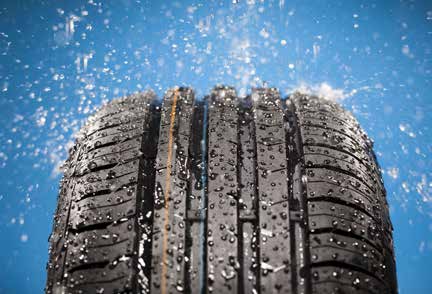Microstructural Evaluation of Energy Efficient and Wear Resistant Tire Materials

Rubber-based composites, like those used for tire treads, are complex materials that, in addition to rubber, contain several other components. Whereas the rubber fraction gives the composite material its typical rubber-like properties such as high elasticity, the addition of nanofillers – like carbon black or silica – influence other essential properties like hardness or abrasion resistance. These parameters can be adjusted by type and fraction of the used nanofiller. The filler fraction in rubber composites for tires is so high that a continuous “filler network” is formed, which dominates the mechanical properties. Hence, detailed understanding and controlled manipulation of the filler network are important topics for the development of optimized rubber composites for tire treads, and are the focus of major research activities at Fraunhofer IMWS.
Research at Fraunhofer IMWS on different rubber composites shows that the filler network contains not only aggregated filler particles but also viscoelastic elements formed by a small immobilized, glassy rubber fraction located on the surface of the filler particles. Although the immobilized segments make up only 1-3 percent of the entire rubber fraction in the composite, their influence on the mechanical properties is significant. Glassy rubber bridges between the filler particles soften successively with increasing temperature. This effect significantly reduces the elastic modulus of the entire composite material and has to be taken into consideration during recipe optimization. Otherwise, the rolling resistance increases if the selected filler fraction is too large, which, in turn, leads to an increase in fuel consumption. This interrelation demonstrates the great relevance of research carried out at Fraunhofer IMWS on the microstructure of the filler network for the application-related optimization of rubber cumposites for tire treads.
 Fraunhofer Group for Materials and Components - Materials
Fraunhofer Group for Materials and Components - Materials